Cycling
Cycling is not only a healthy and social mode of transportation, it is also part of building a sustainable city.
Image
The official website for the City of London, Ontario
Bikes are fun, are more affordable than a vehicle, improve our health, and are good for the environment and our community.
If you have questions about cycling in London, please contact cycling@london.ca
The City provides more than 350 km of pathways, bike lanes and cycle tracks serving a growing number of cyclists daily. Use London's Bike Map or interactive City Map to help plan your route, or use Google Maps and select the bike icon for cycling information.
Situated on scenic park lands along the Thames River, the Thames Valley Parkway is a beautiful multi-use pathway system in London. The current path network is 43 kilometres in length and connects to more than 150 kilometres of additional pathways connecting all corners of the city.
If mountain biking is your preference, try the loop around the lake at Fanshawe Conservation Area through forests and open meadows, or ride the trails at Boler Mountain where there is a beginner loop and an advanced loop for cyclists. London is also home to Forest City Velodrome for indoor track cycling.
Bike rentals are available at Boler Mountain and Trek Bikes.
As our cycling network continues to grow and more people choose to ride bikes to move through London, we are working to connect more neighbourhoods, business districts, and destinations with cycling infrastructure improvements.
learn more about new and upcoming cycling improvements
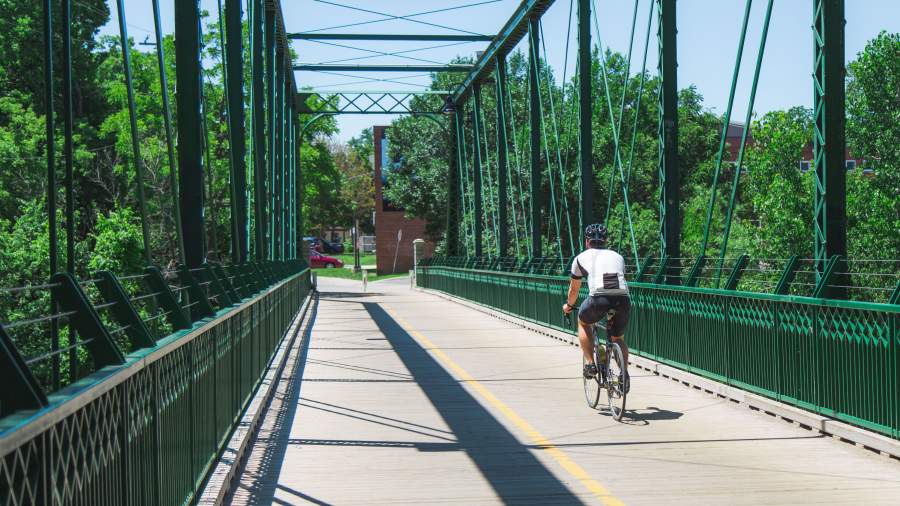
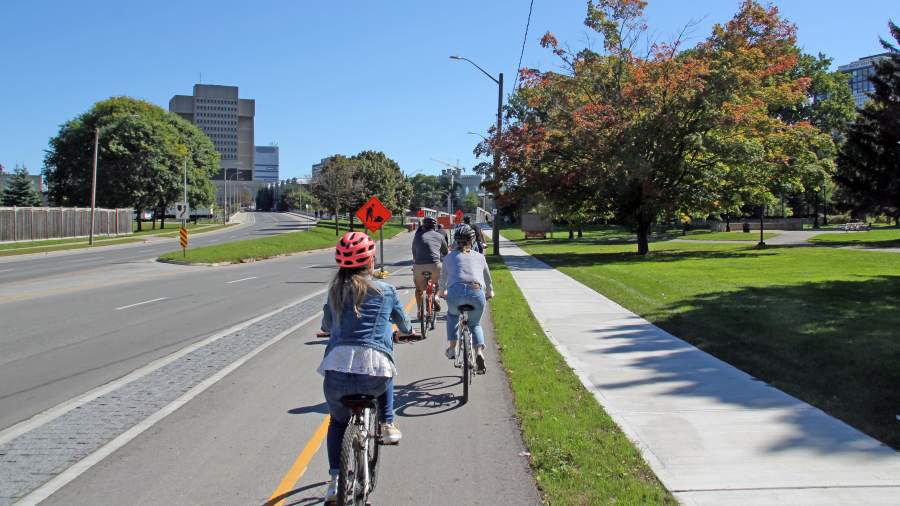
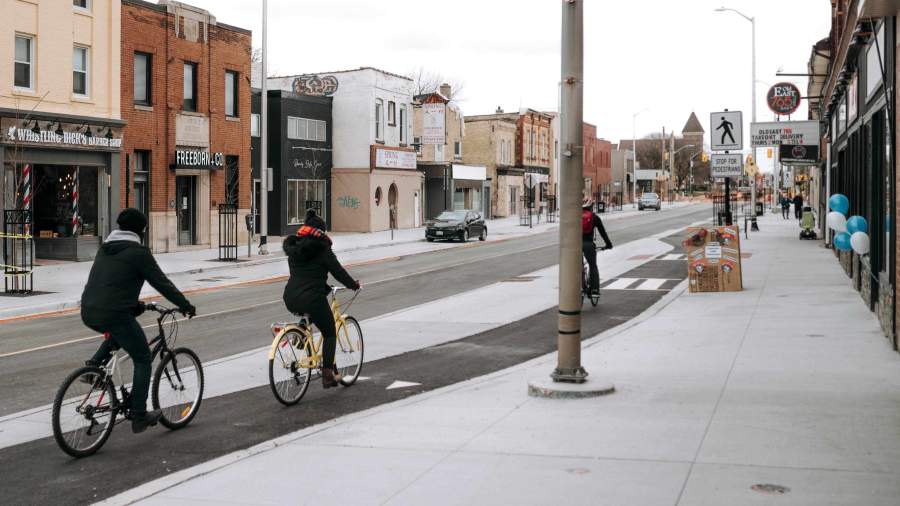
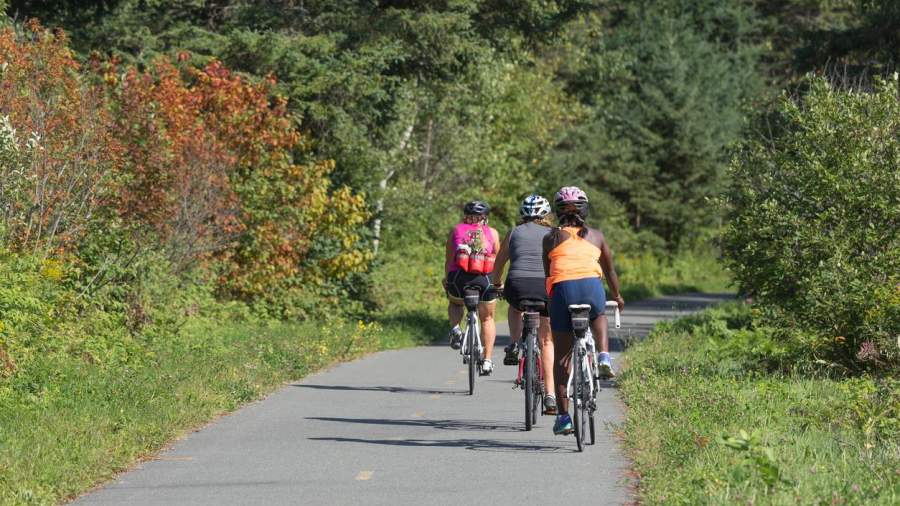
Learning opportunities for all ages and abilities are available through some community organizations in London. It is important to know the basics of bike safety before cycling for the first time.
London Cycle Link's Ride to Thrive program
Ontario’s Guide to Safe Cycling
E-bikes offer energy efficient transportation with many physical and health benefits much like a conventional bicycle.
An e-bike is a power-assisted or motor-assisted bicycle.
They can look like a conventional bicycle and can also be used just by pedaling.
You do not need a driver's licence, vehicle permit, or licence plate to ride an e-bike, but you do need to:
E-bikes are different than personal electric kick-style scooters or mopeds. In London, you can ride your e-bike on most roads, multi-use pathways, and highways where conventional bikes are permitted.
| Roadway (vehicle lanes) | Bike lanes and cycle tracks | Multi-use pathways (including the Thames Valley Parkway) | Sidewalks | |
| Bicycle | Yes | Yes | Yes | No* |
| E-bikes and cargo power-assisted bicycles up to 119 kilograms | Yes** | Yes | Yes | No |
| Personal electric kick-scooters | Yes** | Yes | Yes | No |
| Power assisted scooters, mopeds, and motorcycles | Yes | No | No | No |
*Children under the age of 14 can ride on sidewalks in London.
You can review the City’s Streets By-law or the City’s Parks and Recreation Area Bylaw online.
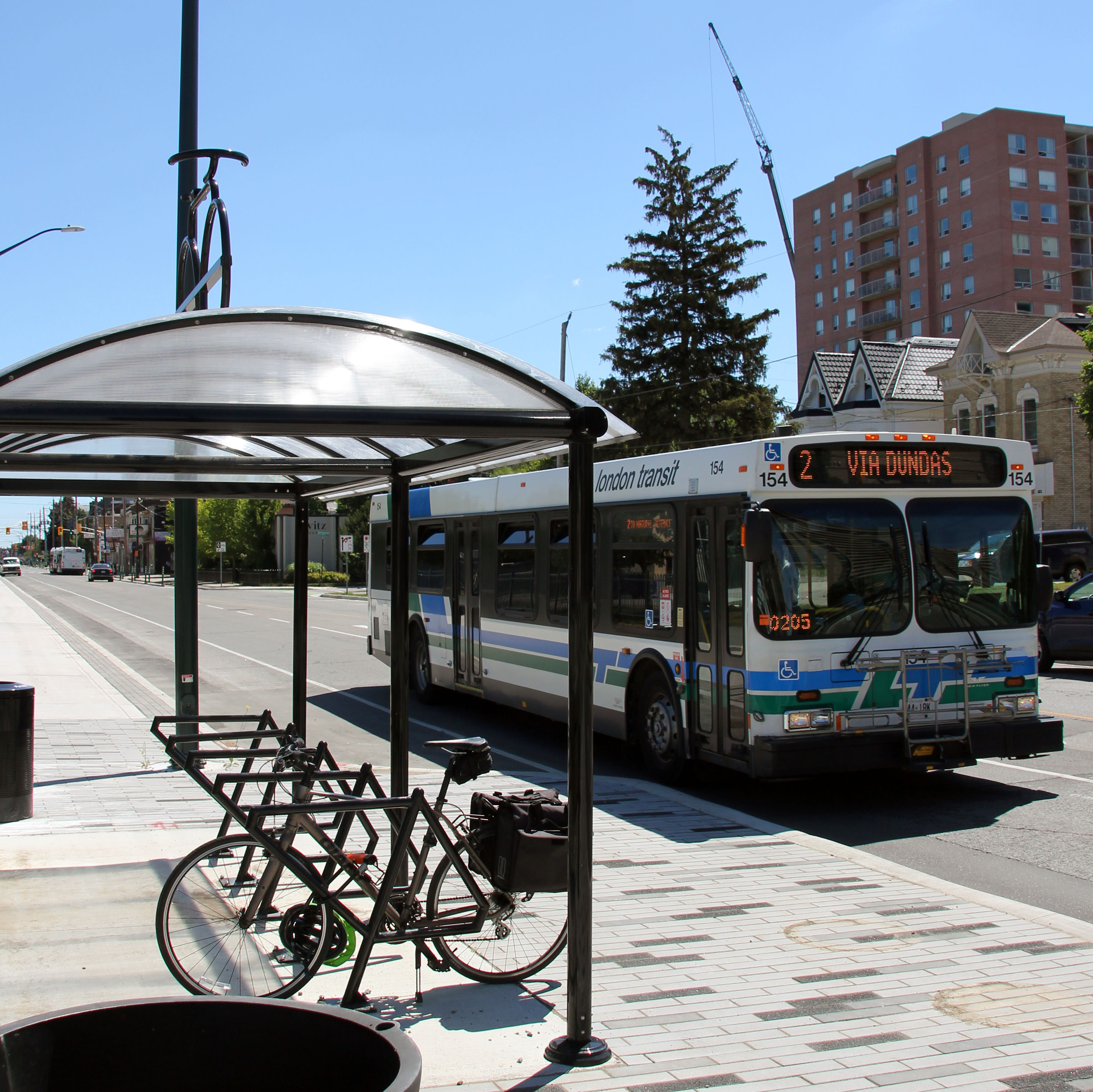
You can find bike racks at City facilities, such as community centres and arenas.
Bike racks and bike posts are also installed along many streets for short-term bike parking.
Enclosed bike lockers are also available at three locations downtown to help provide cyclists a secure space to park their bike.
For more information or to request bike parking be installed near you, please email cycling@london.ca
According to London's Streets by-law, adults are prohibited from riding on sidewalks. Only children under the age of 14 can ride on sidewalks.
A bicycle is a vehicle, according to the Ontario Highway Traffic Act. This means that cyclists have the same rights and responsibilities to obey all traffic laws as other road users. Ontario's Ministry of Transportation also produces a cycling skills handbook and safety guide to explain this information.
Want to take a longer trip? Explore surrounding communities on two wheels.
These are bike boxes. Their purpose is to assist cyclists to turn left at intersections. These vivid green painted areas located at signalized intersections are part of the City's Mind the Green safety campaign.
This designated green area significantly increases the visibility of cyclists, making drivers more aware of their presence.
Bike boxes also help to prevent drivers from making right turns in front of cyclists approaching from behind.
These are share-the-lane pavement markings (or “sharrows” for short), reminding drivers and cyclists to share the road. They are often located at pinch points where a bike lane is not possible. Sharrow markings are designed to help motorists look out for cyclists and highlight the best position for cyclists on the road.
For more assistance, please contact cycling@london.ca